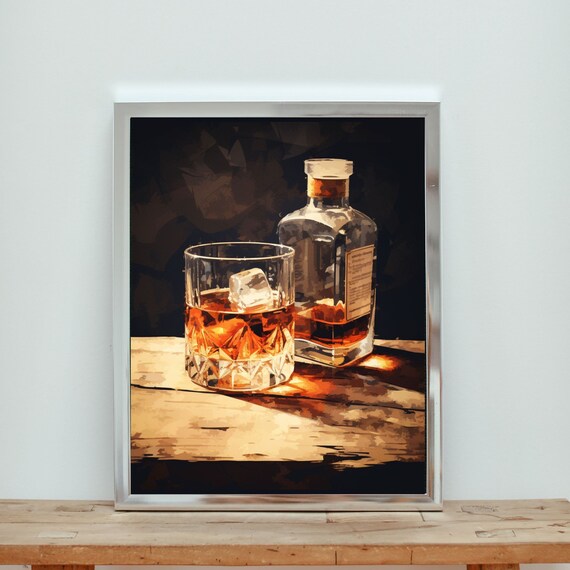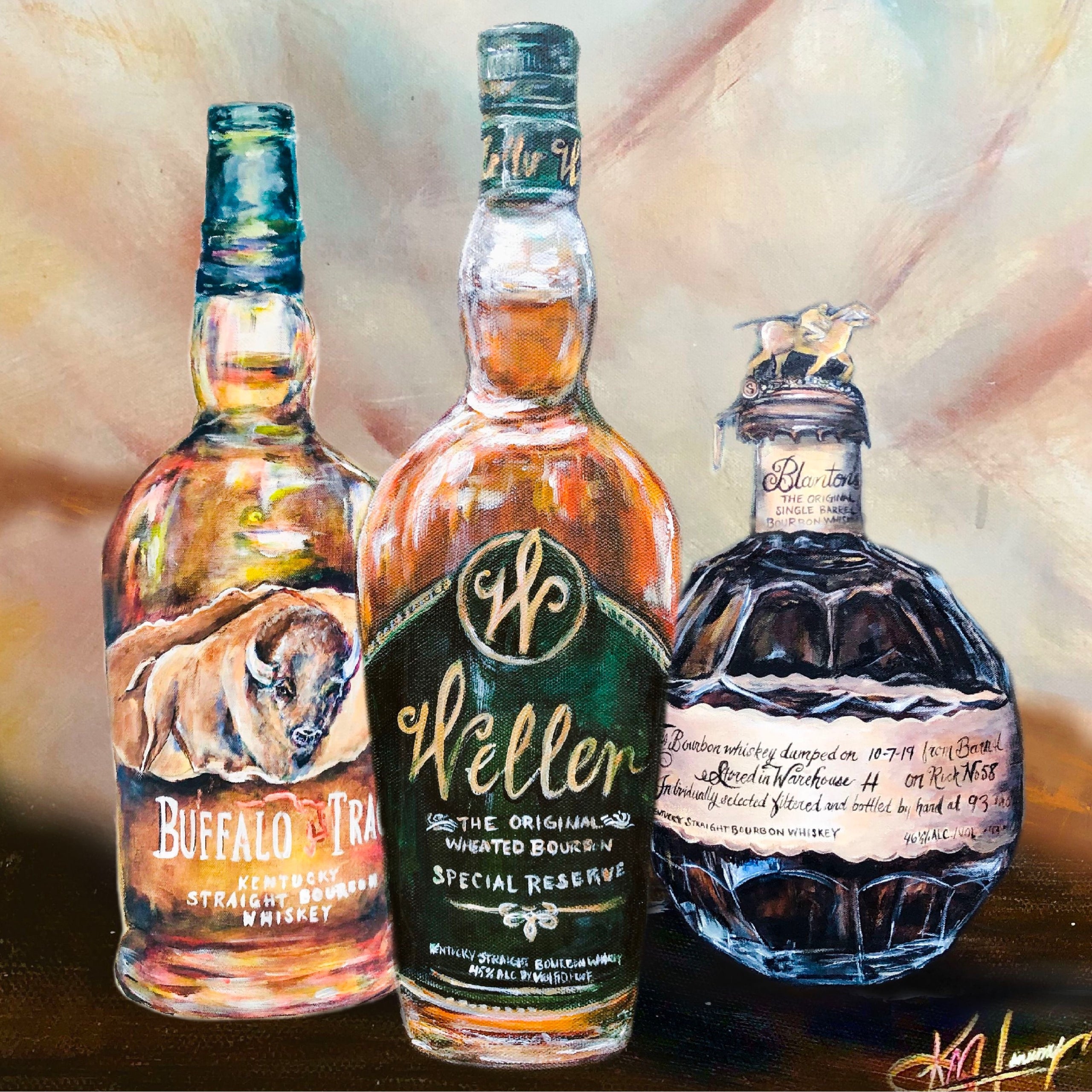Limited Edition Bourbon Art: Why Collectors Are Gathering to Special Finds
Limited Edition Bourbon Art: Why Collectors Are Gathering to Special Finds
Blog Article
The Relevance of Whiskey Art in Celebrating Heritage and Craftsmanship in the Beverage Industry
The elaborate relationship in between scotch art and the party of heritage and craftsmanship within the beverage market can not be overstated. Via thoughtfully designed bottles and tags, scotch brand names encapsulate their historic roots and the artisanal abilities that define their manufacturing methods.
The Historic Roots of Whiskey
At the heart of bourbon's appeal exists a rich tapestry of historic origins that trace back to old civilizations. The beginnings of bourbon can be linked to the purification practices of the Sumerians and Babylonians around 2000 BCE, where early kinds of fermented grain beverages began to arise. It was in the Middle Ages that the art of distillation progressed substantially, especially in Ireland and Scotland, leading to the creation of scotch as we know it today.
The term "whiskey" itself obtains from the Gaelic word "uisce beatha," meaning "water of life." This phrase emphasizes the social significance of whiskey in Celtic cultures, where it was commonly linked with rituals, celebrations, and common bonding. By the 15th century, purification ended up being an identified craft within reclusive communities, paving the way for the establishment of legal distilleries.
As trade paths broadened, bourbon's appeal expanded, going beyond local borders and recording the passion of aficionados worldwide. Bourbon Art. This historical journey mirrors not just the workmanship behind bourbon manufacturing yet additionally its indispensable duty in social and social contexts, noting it as a considerable beverage throughout history
Artistic Expression in Branding
Whiskey branding stands as a compelling intersection of virtuosity and business, where aesthetic identity plays a vital function in shaping consumer perception. The aesthetic appeals of scotch labels, packaging, and marketing products show not only the brand's tale however likewise its core values and heritage. Via imaginative expression, distilleries communicate a narrative that resonates with customers, evoking emotions and triggering links.
The use of shade, typography, and imagery in branding offers to distinguish items in a saturated market. As an example, traditional concepts may stimulate a sense of credibility and craftsmanship, while modern-day styles can indicate advancement and forward-thinking. This strategic creative instructions improves brand name recognition and loyalty, permitting consumers to create an individual relationship with the scotch they pick.
Furthermore, imaginative expression in branding frequently offers as a party of regional heritage. Distilleries often include local signs or historic referrals into their styles, developing a local color that invites customers to take part in a broader cultural experience. Eventually, the virtuosity behind whiskey branding not only improves visual charm yet also improves the general story of the brand, promoting a much deeper recognition for the craftsmanship and heritage ingrained in each container.
Craftsmanship in Bottle Style
The creativity apparent in scotch branding prolongs beyond aesthetic identity to incorporate the workmanship associated with bottle design. Each bottle functions as a vessel not just for the spirit within, but also for the story it tells about its practice, beginning, and top quality. The layout procedure calls for careful interest to detail, as elements such as product, closure, and form add substantially to the general perception of the whiskey.
Workmanship in container design involves picking high-grade glass that can boost the scotch's color and quality, while likewise offering a tactile experience for the customer. The silhouette of the bottle have to be both practical and aesthetically enticing, commonly showing the heritage of the brand. Lots of distilleries choose for unique forms or embossed logo designs that evoke a feeling of authenticity and background.
Additionally, the label style and typography play an important duty in interacting the brand's story. Bourbon Art. A well-crafted container not only mesmerizes the consumer's eye however also strengthens the brand name's commitment to top quality and tradition. This way, the craftsmanship of container design ends up being a vital element of the bourbon experience, merging virtuosity with a profound respect for heritage
Social Importance of Bourbon Art
Celebrating custom and workmanship, the cultural importance of bourbon art transcends simple visual appeals, linking with the historical and social stories of the areas from which it originates. Each container functions as a canvas, depicting the special tales, folklore, and customs that have actually formed local whiskey-making methods. The detailed designs typically mirror the heritage of the distillers, incorporating symbols and themes that reverberate with the society and worths of their communities.

In addition, scotch art plays a vital function in public events and parties, acting as a concrete web link between people and their shared experiences. By valuing the artistry in scotch product packaging, customers cultivate a much deeper understanding and regard for the craft, you can find out more ultimately enhancing their satisfaction of the drink itself.
Modern Trends in Whiskey Discussion
Over the last few years, the discussion of whiskey has progressed Recommended Site to mirror contemporary tastes and patterns while still recognizing traditional craftsmanship - Limited Edition. Distilleries are significantly focusing on aesthetic aspects that improve the total alcohol consumption experience, bridging the gap between heritage and modernity
Ingenious bottle styles have actually arised, often incorporating sustainable materials and creative labels that tell engaging tales. Lots of brand names currently team up with neighborhood musicians, instilling their items with one-of-a-kind aesthetic expressions that reverberate with customers. In addition, limited-edition launches are usually packaged in collectible containers, including worth and allure for aficionados.

Verdict
In verdict, scotch art serves as an important channel for expressing the heritage and craftsmanship inherent in the drink sector. With elaborate branding, innovative bottle layouts, and culturally significant imaginative aspects, scotch brand names efficiently recognize their practices and link with customers.


Workmanship in bottle design entails choosing top notch glass that can improve the whiskey's shade and clearness, while also giving a responsive experience for the consumer. In this means, the craftsmanship of bottle layout ends up being a vital facet of the scotch experience, merging creativity with a profound regard for heritage.
In final thought, bourbon best site art serves as a vital avenue for expressing the heritage and workmanship intrinsic in the beverage market.
Report this page